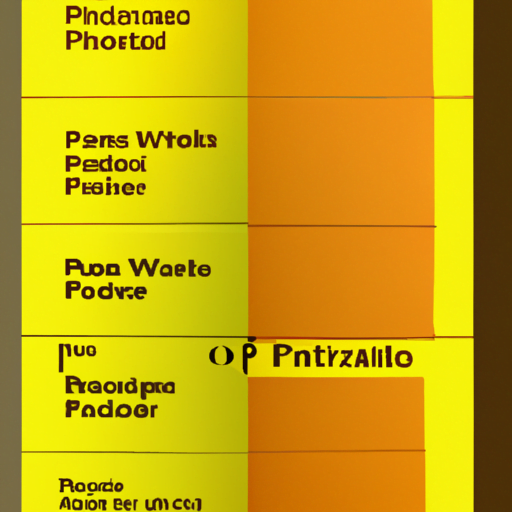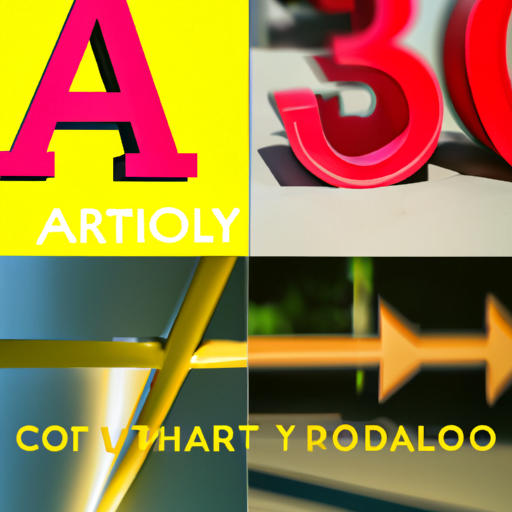
-
Table of Contents
The Role of Typography in Wayfinding Design

Wayfinding design plays a crucial role in helping people navigate and find their way in various environments, such as airports, hospitals, shopping malls, and even cities. While many elements contribute to effective wayfinding, typography is often overlooked. However, typography plays a significant role in guiding and informing individuals, enhancing their overall experience, and ensuring their safety. In this article, we will explore the importance of typography in wayfinding design and how it can be utilized to create effective and user-friendly navigation systems.
1. Typography as a Visual Language
Typography is more than just selecting a font; it is a visual language that communicates information and guides users. The choice of typeface, font size, spacing, and hierarchy all contribute to the legibility and readability of the wayfinding system. When designing typography for wayfinding, several factors need to be considered:
- Legibility: The typeface should be easily readable, even from a distance or in low-light conditions. Sans-serif fonts are often preferred for their simplicity and clarity.
- Contrast: The contrast between the text and the background is crucial for legibility. High contrast ensures that the text stands out and can be easily read.
- Font Size: The size of the text should be appropriate for the viewing distance. For example, larger fonts are necessary for signs that need to be read from a distance, such as highway signs.
- Hierarchy: The use of different font sizes, weights, and styles helps create a visual hierarchy that guides users through the information. Important information should be emphasized and easily distinguishable.
By carefully considering these factors, typography can effectively communicate information and guide users in a way that is clear and easy to understand.
2. Enhancing User Experience
Typography in wayfinding design goes beyond mere functionality; it also plays a significant role in enhancing the overall user experience. Well-designed typography can create a sense of place, evoke emotions, and contribute to the aesthetics of the environment. Here are some ways typography can enhance user experience:
- Branding: Typography can be used to reinforce a brand’s identity and create a cohesive visual language throughout the wayfinding system. Consistent use of typography can help users associate the environment with a particular brand or organization.
- Emotional Connection: Typography can evoke emotions and create a sense of place. For example, a playful and whimsical typeface may be used in a children’s hospital to create a friendly and welcoming atmosphere.
- Wayfinding as an Experience: Typography can be used creatively to turn the act of wayfinding into an engaging and memorable experience. For instance, using typography as part of an interactive installation or incorporating unique typographic elements can make the navigation process more enjoyable.
By considering typography as an integral part of the user experience, wayfinding design can create environments that are not only functional but also visually appealing and emotionally engaging.
3. Case Studies: Effective Typography in Wayfinding
Several real-world examples demonstrate the impact of typography in wayfinding design. Let’s explore a few case studies:
Case Study 1: The New York City Subway
The typography used in the New York City subway system is an iconic example of effective wayfinding design. The use of the Helvetica typeface, with its clean and simple design, ensures legibility and readability even in the fast-paced and crowded subway environment. The consistent use of typography across all signage and maps creates a cohesive and easily recognizable system, allowing commuters to navigate the complex subway network with ease.
Case Study 2: The Eindhoven Wayfinding System
The Eindhoven Wayfinding System in the Netherlands is another excellent example of typography’s role in wayfinding design. The system utilizes a custom-designed typeface called “Eindhoven Sans,” which was specifically created to enhance legibility and readability. The typeface’s unique design, with its rounded corners and open letterforms, ensures clarity and ease of reading. The typography is used consistently across various signage and maps, creating a visually cohesive and user-friendly wayfinding system.
4. Safety Considerations
Typography in wayfinding design is not only about aesthetics and functionality; it also plays a crucial role in ensuring the safety of users. Clear and legible typography can prevent confusion, reduce errors, and guide individuals in emergency situations. Here are some safety considerations when designing typography for wayfinding:
- Emergency Exits: Typography should be used to clearly indicate emergency exits and evacuation routes. Bold and highly visible typography can help individuals quickly locate the nearest exit in case of an emergency.
- Warning Signs: Typography can effectively communicate warnings and safety instructions. The use of bold and contrasting typography can draw attention to important safety information, such as “Caution” or “Danger.”
- Consistency: Consistent use of typography throughout the wayfinding system ensures that users can easily recognize and understand the information, even in stressful or emergency situations.
By considering safety as a crucial aspect of wayfinding design, typography can contribute to creating environments that prioritize the well-being and safety of individuals.
5. Summary
Typography plays a vital role in wayfinding design, guiding individuals and enhancing their overall experience. By considering legibility, contrast, font size, and hierarchy, typography can effectively communicate information and ensure clarity. Additionally, typography can enhance user experience by reinforcing branding, creating emotional connections, and turning wayfinding into an engaging experience. Real-world case studies, such as the New York City subway and the Eindhoven Wayfinding System, demonstrate the impact of typography in creating effective navigation systems. Furthermore, typography plays a crucial role in ensuring the safety of individuals by clearly indicating emergency exits, communicating warnings, and maintaining consistency. By recognizing the importance of typography in wayfinding design, we can create environments that are not only functional but also visually appealing, emotionally engaging, and safe for all users.
